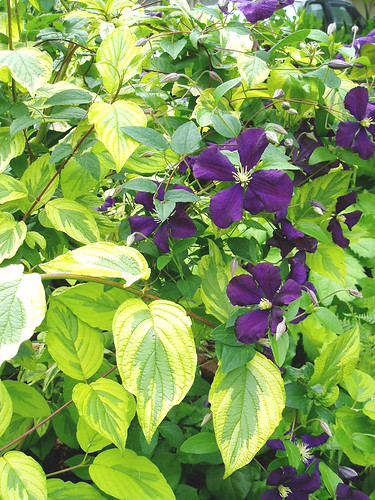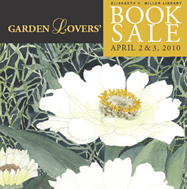I had such a fun time visiting with my good friend, Joyce a few weeks ago. She emailed requesting some advice on their yard in Bellevue and I was more than happy to pay her a visit, catch up and see what we could do for them as she and her husband tackle the challenges of a new home and landscape. While the house is under control, they've started to putter around in the yard. (yes, being the cheap bastard I can be, I offered my services to them as a wedding gift....hahhah). So, we met up, Joyce prepared me a yummy lunch and so began our consultation.
Somewhat embarrassed by some of the pruning work they've done, it actually wasn't all that bad. I demonstrated proper pruning cuts and how to thin out some of the rambunctious shrubs that were plunged into their yard shortly before they moved in and we did a bit of planting as I brought her some plants including springs bulbs to perk up their front yard.

Here, I taught her how to knock a plant out of its pot. Spreading her fingers through the stem and leaves, she turned the pot upside down and let gravity do the work. If this were a pot-bound plant, a light tap of the rim will help loosen it.

Knowing Joyce since high school (she was actually my prom date!), we never really, like, gardened together and I was mighty impressed at her inquisitive questions and her mean digging skills as she dug a planting hole in glacial till for the yellow-twig dogwood!!

We discussed the difference between mulch and the native soil during planting. I stressed the importance of getting the roots of a woody tree or shrub in direct contact with the native soil without having to amend the planting hole.

Because Joyce is naturally brilliant (she's a pharmacist at Children's, btw), she remembered from early biology classes that tree roots really expand out rather than go directly down. So, she didn't mind digging a wider planting hole to accommodate the spread-out roots system of a baby Cornus 'Hedgerow's Gold'.
Here's what she can expect: Hmm...maybe I should hook her up with the Clematis, too!

I think watching Joyce "dig" what she was doing was the most satisfying part. She and Pat now know the hidden potential of their garden and how to oversee it; it's going to be an ongoing process and I think they'll understand that and not feel like it's going to be a tedious chore, but a relaxing and rewarding weekend activity for both of them.

I hope they also know that I'll be in touch for more advice and to hook them up with some more awesome plants!















































